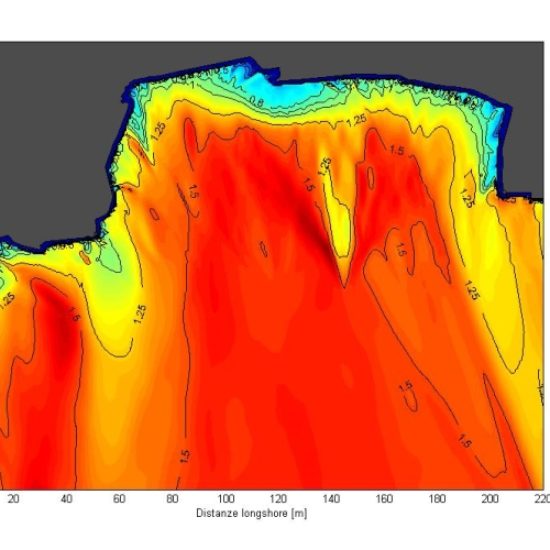

Nwogu\'s extended Boussinesq equations semicircular breakwater rectangular breakwater RTD coefficients performance finite difference method Although the model equations are non-dissipative, the non-energy conserving transmission and reflection coefficients due to wave-breakwater interactions lead to dissipation type contribution. Even the breakwater height is below the seawater surface, and it may reduce the wave height. Based on our computational results, one may conclude that the rectangular breakwater has a better overall performance than the semicircular breakwater. The submerged breakwater is one coastal erosion countermeasure. The transmission coefficients K_T for rectangular breakwater shows the better performance up to 2.47% than that for the semicircular breakwaters. Breakwaters are offshore, sloped or vertical concrete walls designed to reduce the erosive power of waves out at sea so that once they reach the shore. The overtopping water initiates local currents, which can be dangerous for swimmers. Quantitatively, for rectangular breakwaters the reflection coefficients K_R are 5-15% higher while the diffusion coefficients K_D are 3-23% higher than that for the semicircular breakwaters, respectively. A submerged structure can be dangerous for small craft navigation. However, the transmission coefficient for the semicircular breakwater is greater than that of the rectangular breakwater and the difference in their transmission coefficients increases with the crest height. On the other hand, the rectangular breakwater has larger dissipation coefficients compared to that of the semicircular breakwater and the difference between them increases as the height of the crest increases. Our computational results and graphical illustrations show that the rectangular breakwater has higher reflection coefficients than semicircular breakwater for a fixed crest height, but as the wave height increases, the two reflection coefficients approach each other.

The latter coefficient K_D emerges due to the non-energy conserving K_R and K_T. The performances of the rectangular and semicircular breakwaters have been examined in terms of the wave reflection, transmission, and dissipation coefficients (RTD coefficients) denoted by K_R, K_T, K_D. For validation purposes, five test cases are considered and numerical results have been successfully compared with the existing analytical and experimental results. The proposed computational scheme uses a staggered-grid system where the first-order spatial derivatives have been discretized with fourth-order accuracy. The finite difference technique has been used to discretize the spatial terms while a fourth-order predictor-corrector method is employed for time discretization in our numerical model. To accomplish this task, Nwogu\'s extended Boussinesq model equations are employed to simulate the interaction of the wave with breakwaters. A systematic numerical comparative study of the performance of semicircular and rectangular submerged breakwaters interacting with solitary waves is the basis of this paper.


 0 kommentar(er)
0 kommentar(er)
